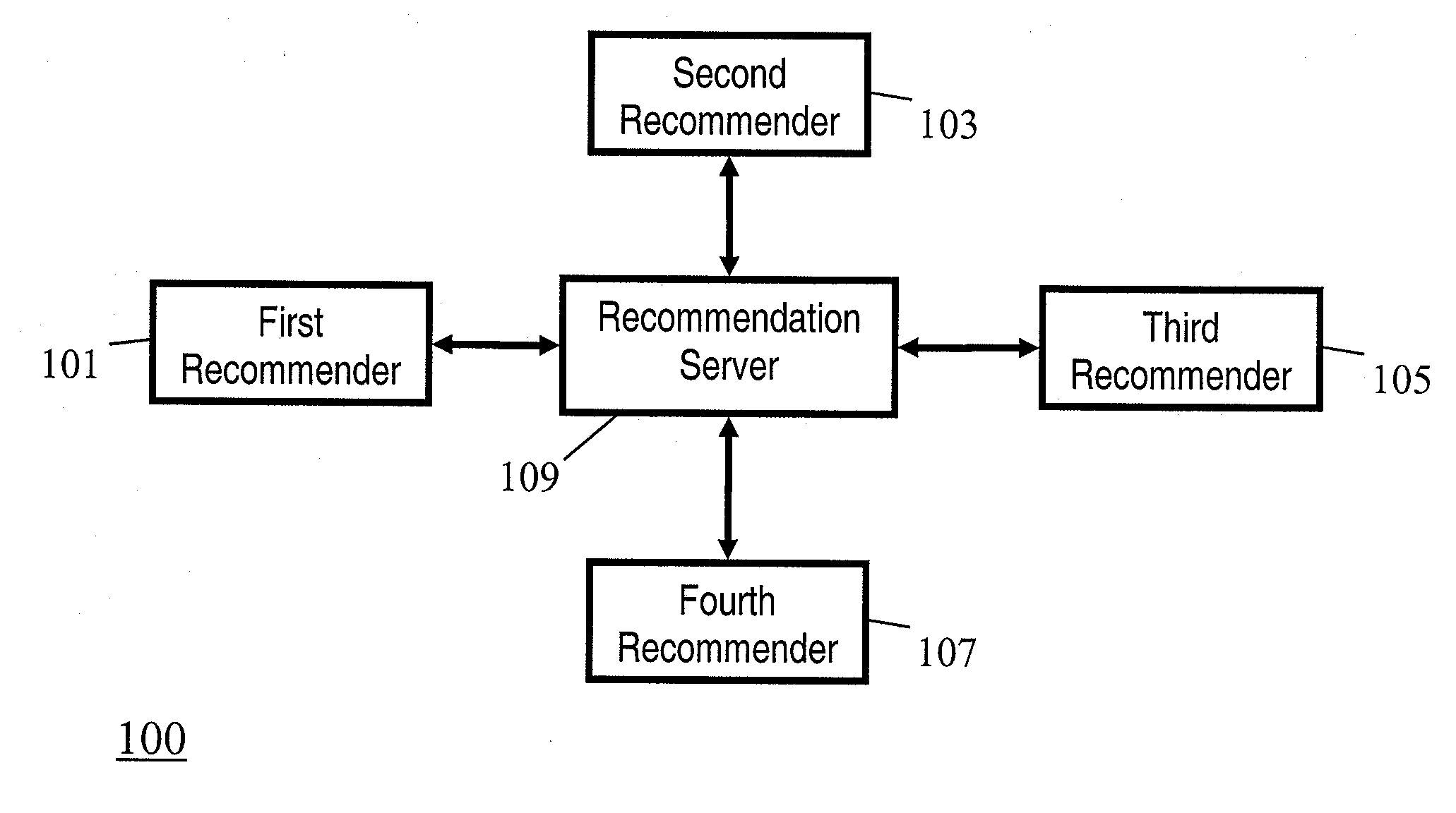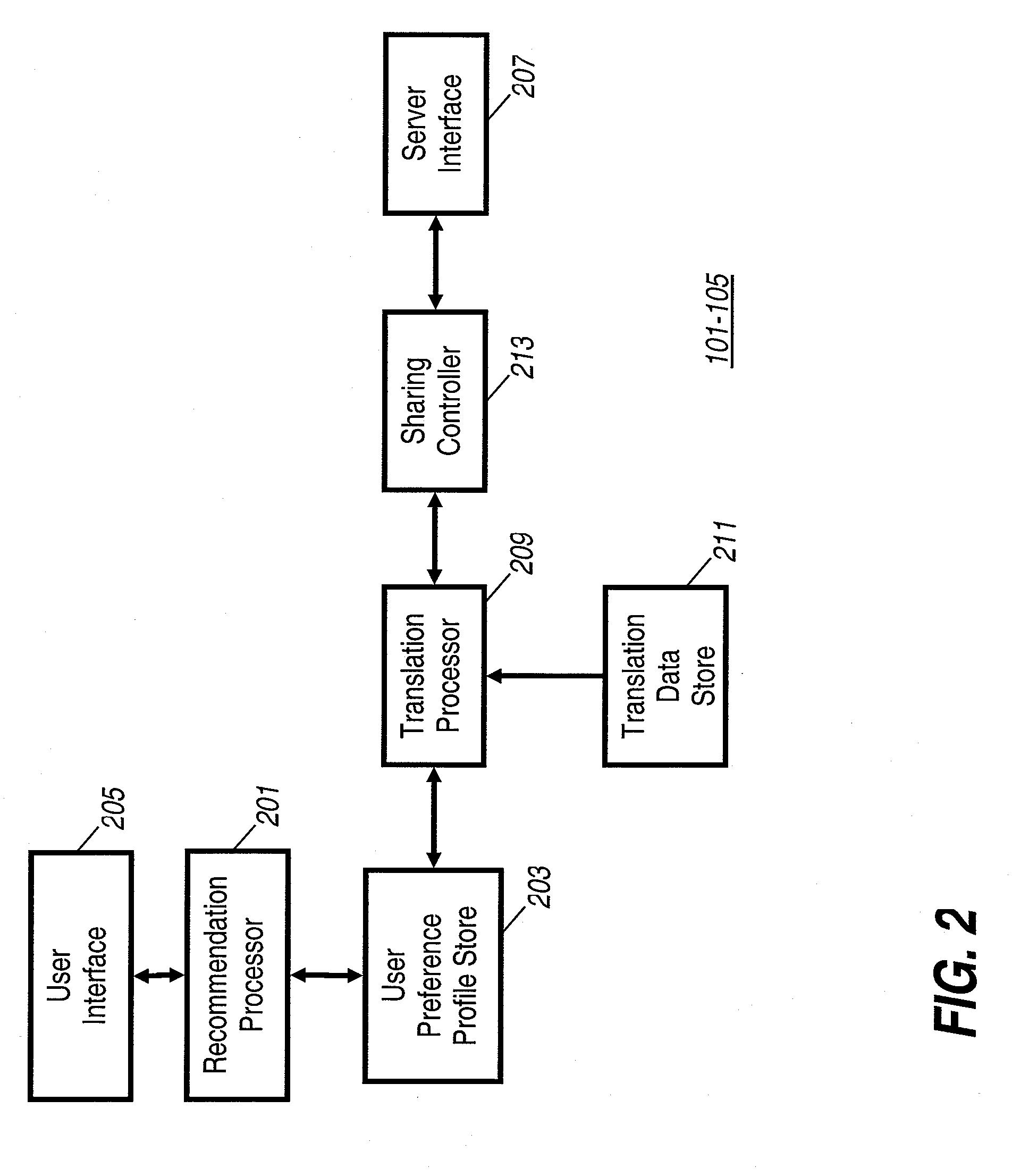Recommendation system and method of operation therefor
a recommendation system and recommendation technology, applied in the field of recommendation systems, can solve the problems of fragmented preferences, poor translation of property, and little or no use of property in other domains, and achieve the effects of improving accuracy, diversity of generated recommendations, and facilitating sharing of user preference information
- Summary
- Abstract
- Description
- Claims
- Application Information
AI Technical Summary
Benefits of technology
Problems solved by technology
Method used
Image
Examples
Embodiment Construction
[0031]The following description focuses on embodiments of the invention applicable to a recommender for content items such as multimedia clips, radio programmes, text documents etc. However, it will be appreciated that the invention is not limited to this application but may be applied to many other user selection applications.
[0032]FIG. 1 illustrates an example of a recommendation system in accordance with some embodiments of the invention. The recommendation system comprises a plurality of recommenders 101-107 which in the example are content item recommenders for content items such as multimedia clips, online documents, radio programmes, podcasts, television programmes, websites etc. Furthermore, each of the recommenders 101-107 is an individually designed recommender which is directly targeted at a specific domain of recommendations. Thus, in the example, each of the recommenders 101-107 can provide recommendations within a specific domain independently of the other recommenders...
PUM
 Login to View More
Login to View More Abstract
Description
Claims
Application Information
 Login to View More
Login to View More - R&D
- Intellectual Property
- Life Sciences
- Materials
- Tech Scout
- Unparalleled Data Quality
- Higher Quality Content
- 60% Fewer Hallucinations
Browse by: Latest US Patents, China's latest patents, Technical Efficacy Thesaurus, Application Domain, Technology Topic, Popular Technical Reports.
© 2025 PatSnap. All rights reserved.Legal|Privacy policy|Modern Slavery Act Transparency Statement|Sitemap|About US| Contact US: help@patsnap.com



